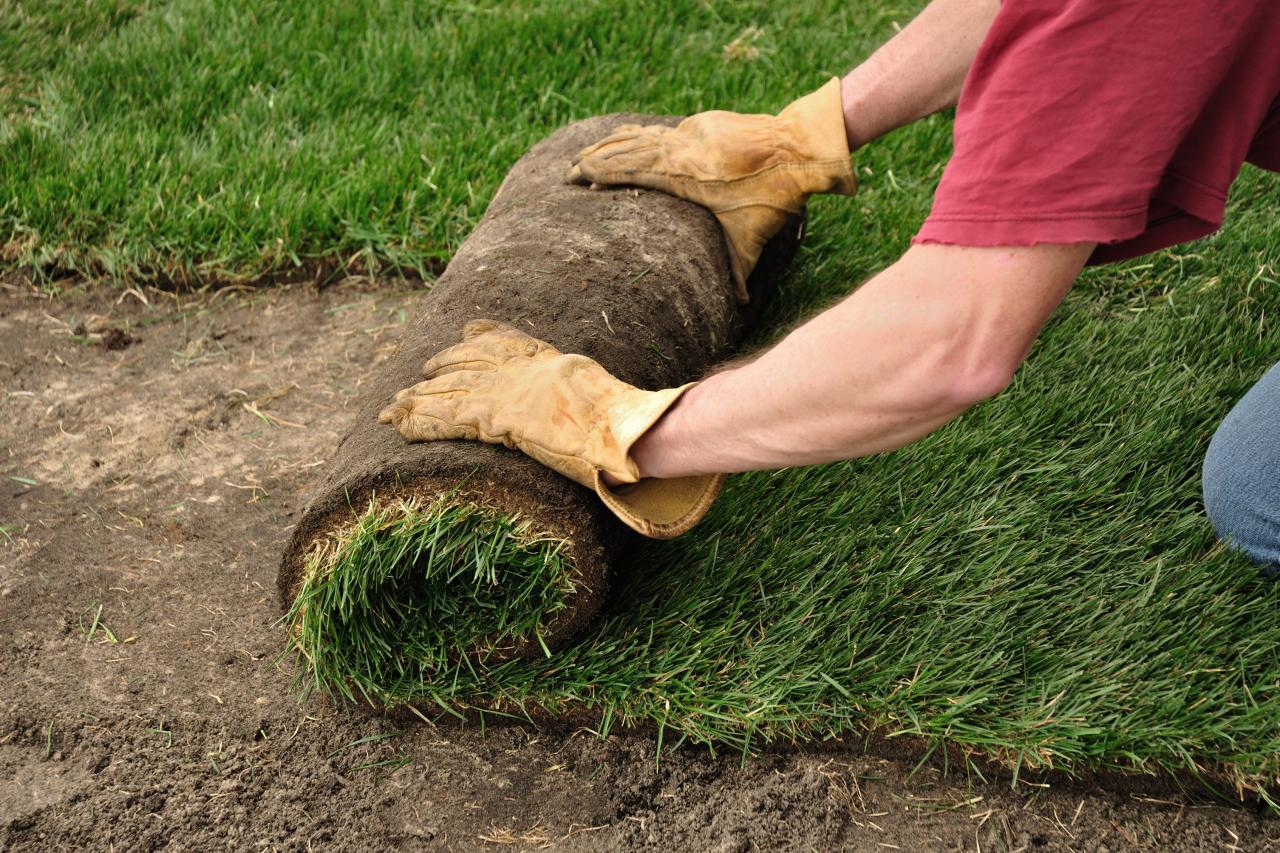Sodding Lawns
Sodding is a quick way to get a beautiful lawn without waiting for grass seeds to grow. It’s important to use high-quality sod that contains elite grass varieties.
Sod is ideal for sloped areas and helps prevent soil erosion. It also eliminates mud and dust. It takes less water and maintenance to care for sod versus a seeded lawn.
Soil Preparation
The health of your lawn starts with the soil. It is important to prepare the soil for sodding in order to give it a good foundation for the new grass. A good way to start is by spreading an organic lawn starter fertilizer over the area (available in our Big Yellow Bag or at Super-Sod stores for pick-up). You should also consider having a soil test done so you know exactly what the soil needs. If the results show the soil is lacking in or heavy on any nutrients, spread them according to the instructions.
Next, remove any existing weeds from the area. This can be done by pulling the weeds by hand or using a weeding tool. Finally, loosen the soil and if necessary, add soil amendments (available in our Big Yellow Bag or at our Super-Sod locations for pick-up in Mini Cubes). A rough grading should be done to slope away from the house foundation, reduce severe slopes and fill low spots to prevent drainage issues.
Sod Installation
Sod is a low-growing mass of grass that can be laid immediately to cover ground where seed would not grow or where erosion is a concern. It can be used for home lawns, commercial landscapes, sports fields and new construction sites. It is harvested from a local farm and usually has been fertilized, frequently mowed and watered to maintain its health.
It is best to install sod within a few hours of delivery. Sod should be placed in a brick-like pattern, pulling the edges together to create an even and dense appearance. A sod roller is often used after installation to smooth the sod into the soil.
It is often worth it to hire a professional to install sod. Sod installation includes removing the old grass, preparing and fertilizing the soil, and laying the sod. The cost of a professional sod installation typically ranges from $7,840 to $15,680 for a 1/5 acre yard. Sod is an affordable and quick way to get the lush, green lawn you desire.
Watering
A sodded lawn requires more watering than a seeded lawn, particularly during the first few weeks. Inadequate watering causes sod to shrink and die. It also promotes the spread of Poa annua and other weeds. During this time, it is important to set a schedule and stick with it.
After sod is installed it should be watered frequently until moisture pen- etrates the soil layer beneath to a depth of 4 inches. Depending on the weather conditions and site conditions this may be as often as every day or as little as twice per week.
As your new sod grows and matures, it will need less water. You should watch for signs of dehydration which include a purplish tint to the blades, gray footprints left when walking on the sod, or gaps forming between sod rolls. Watching for these signs will help you fine tune your irrigation schedule and achieve optimum soil moisture levels.
Fertilizing
Fertilizing is a big part of caring for sod. It provides it with extra nutrients that are not naturally available in the soil. This gives the grass a better chance of successfully establishing itself and growing well.
It’s important to avoid fertilizing sod before it has fully established itself. Doing so could damage or rip up the new roots. It’s also a good idea to wait until the sod is rooted in before using any weed control products.
When you do start to fertilize, the best option is to choose a balanced fertilizer with a N-P-K ratio of around 10-10-10. The Lawnifi fertilizer box, for example, is a great choice because it uses Catalyst TechnologyTM, which nano-sizes the nutrients so that they can be absorbed more easily by the roots. This makes it easier for the soil to absorb and use the nutrients, which is essential for sod. This also helps to prevent nutrient leaching into waterways and surface waters.

